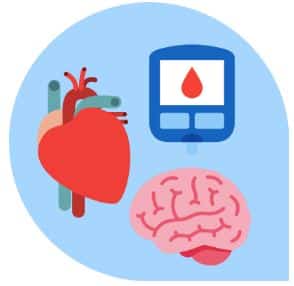
Terry Mactaggart
by Terry Mactaggart, President and CEO, Summus Hearing
It’s been over two years since our last commentary about hearing health and the road ahead, foreseen at that time. Since then, implementation of over-the-counter devices, the introduction of new players and channels, rapid evolution of technologies and a growing body of relevant research all suggest that steady progress is being made.
We still have a problem…
It was a recent editorial in The Lancet that provided the catalyst for another critical look. Well worth a read (or re-read), it argues that “hearing is a growing public health issue affecting people of all ages,” a reality I’ve believed for some time. While ranked #3 after heart disease and cancer, evidence suggests that hearing loss is our #1 untreated chronic health problem! Another take on it is that apparently almost twice as many people report hearing loss than either diabetes or cancer.
The facts are known, if not widely appreciated. Highlights, again from that The Lancet editorial, include the WHO’s estimate that more than 1 billion people now experience some form of hearing loss, a number that could as much as quadruple by 2050.
The article goes on to list some of the profound effects associated with hearing loss – employment and quality of life deficiencies, compromised learning particularly among young people, isolation and cognitive decline among those older, all adding up to greater personal challenges and an enormous annual multi-billion-dollar cost.
Recognizing the breadth and sum of this problem is vital. The overarching question remains what are we doing about it? And will such efforts be sufficient to stabilize, then demonstrate real improvements?
One way of starting to address these questions is to break out the “hearing problem” into various components examining the state of play with each. We did this at Summus a couple of years ago and came up with this infographic highlighting seven common issues.
While simplified, the following comments still appear valid.
 1. Only 2% are tested
1. Only 2% are tested
This estimate for the United States is dated and may be different today. In any event, it’s a very low percentage of the relevant population and stands out when compared, say, to testing for eyesight or blood pressure.
Conclusion – Not anywhere good enough!
 2. Testing, when done, is often inadequate
2. Testing, when done, is often inadequate
Screening tests abound, particularly online. But unless undertaken by an unbiased provider, these tend to be skewed towards acquiring hearing aids. Adequate interpretation of results is a problem as almost all lack that capability.
Conclusion – This bias needs to be rectified if an entry into one’s hearing journey or a check along the way is to be trusted.
 3. Wait time between awareness and action is too long
3. Wait time between awareness and action is too long
5 years minimum, 10 years maximum defines the range, the median appearing to be 6-7 years; And that applies only to those who have been tested and ultimately decide to act!
Conclusion – Obviously a “Capital P” problem.
 4. Relationships with other disease states require greater emphasis
4. Relationships with other disease states require greater emphasis
Co-morbidities have multiplied and become more obvious.
Conclusion – In addition to further research, these relationships provide promising leverage. Much more could be done to insert a hearing test as part of the follow-up protocol when a disease state is detected or being managed.
 5. Learning and behavioral issues need to be confronted
5. Learning and behavioral issues need to be confronted
We know that undetected and untreated hearing loss compromises the learning and lifestyle trajectory of many children.
Conclusion – Testing of public-school age children should be mandated, and in many cases re-established.
 6. Key healthcare providers are left out
6. Key healthcare providers are left out
This problem is enormous as family physicians and pharmacies (to name two prominent exclusions) are not connected sufficiently, if at all, with hearing health.
Conclusion – The imperative of mandating physicians to counsel and test appears to be gaining ground. More pharmacy chains are adding hearing as a new revenue source. Engaging both fully would make a significant difference.
7. Productivity loss and social costs are too high
Billions are spent annually, often combined with other costs and therefore hidden.
Conclusion – Freeing up even a third represents a large amount that could be allocated to other pressing, underfunded public health problems.
Looking Ahead – What’s now needed…?
Adding up and combining this analysis suggests that, while progress is indeed underway, there is much more to do if “the growing aspect” of the public health issue is to be reduced and a broader and accelerating impact is to result.
Typical of other “meta problems”, short of extremes like the pandemic, present approaches appear to be fragmented and underfunded with insufficient public-facing messaging being consistently sent from credible public and private sources.
Our basic assessment is that hearing health needs not “just more of the same” but an actual REBOOT if the substantial gains warranted are to be made during the next decade.
Our perspectives are drawn from actively participating in several of the above areas, reviewing our large data sets while working with channel partners towards extending a reliable and trusted hearing guidance process.

Making impactful changes in hearing health requires a commitment to common cause and a coalition approach adopted by public, private and non-profit parties
“Moving the meter” towards more impactful changes in hearing health requires a commitment to common cause and a coalition approach adopted by public, private and non-profit parties. There are several moving parts that deserve greater commentary and cross-sectoral engagement.
In thinking about this, I’m reminded that significant change usually occurs when stimulated by crisis and/or opportunity. A persuasive argument can be made that both are now to some degree evident in hearing health.
A promising methodology could be to examine how other disease states have been confronted and managed. I looked, for example, at several contexts including colorectal cancer, MS and diabetes, each of which has a comprehensive ecosystem.
A multifaceted advance was critical with each involving various strategies and stakeholders. With the assistance of a chatbot, I came up with the following measures applicable to hearing.
Awareness and Education:
- Develop public health campaigns to raise awareness about hearing loss, its causes, prevention, and available treatments.
- Conduct educational programs in schools, workplaces, and communities to promote hearing health and safe listening practices.
Early Detection and Screening:
- Implement routine hearing screenings in healthcare settings, schools, and workplaces to identify hearing loss at an early stage.
- Provide accessible and affordable hearing tests and screenings in underserved areas or marginalized communities.
Accessible and Affordable Hearing Care:
- Improve access to affordable hearing aids, assistive listening devices, and other hearing assistive technologies.
- Collaborate with manufacturers and policymakers to reduce the cost of hearing devices and promote insurance coverage for hearing-related services.
Professional Training and Capacity Building:
- Enhance training programs for healthcare professionals, audiologists, and hearing care specialists to ensure accurate diagnosis, appropriate treatment, and ongoing care for individuals with hearing loss.
- Encourage research and innovation in audiology to develop new treatments, technologies, and interventions.
Supportive Policies and Regulations:
- Advocate for the development and implementation of policies that prioritize hearing health, including noise regulations, occupational safety standards, and school-based hearing health programs.
- Support legislative efforts to include hearing healthcare in public health initiatives and insurance coverage.
Collaborative Partnerships:
- Foster collaboration between government agencies, healthcare providers, educational institutions, non-profit organizations, and industry stakeholders to establish a comprehensive ecosystem for addressing hearing loss.
- Encourage partnerships to conduct research, share resources, and develop effective strategies for prevention, early intervention, and treatment.
Community Engagement and Empowerment:
- Engage local communities by organizing support groups, educational workshops, and awareness events.
- Involve individuals with hearing loss and their families in decision-making processes and empower them to advocate for their rights and access to quality care.
Data Collection and Surveillance:
- Establish a robust data collection system to monitor the prevalence, causes, and impact of hearing loss.
- Use data to identify at-risk populations, measure the effectiveness of interventions, and inform evidence-based policies and programs.
Peer-to-Peer Networks:
- Match most other chronic conditions by developing and promoting an easily accessible platform for individuals to use to ask questions, share experiences and provide advice. Lack of such a peer-to-peer network represents current deficit in hearing health.
By combining these strategies, it should be possible to establish a comprehensive ecosystem that addresses the public health problem and promotes better hearing health for all individuals. That’s well stated, providing a good summary and check list. A deeper dive, no doubt, would reorganize the list somewhat, ranking certain elements quite highly and well advanced while others as barely evident.
Building out the Ecosystem – an Imperative for Hearing Health
A systems approach will recognize that managing the process leading to better performance is tricky. It would involve a much greater degree of coordination and collaboration among stakeholders than at least I observe presently to ensure the delivery of effective care, support and research. And let’s remember that there is no centralized authority to take on and oversee such an enterprise.
Speculating further, one could foresee a need to rely on several mechanisms to facilitate its management including key aspects like…
- Intensifying research collaboration between researchers, academic institutions, and hearing related companies collaborating on studies and clinical trials to advance knowledge and treatment options for hearing.
- Enhancing the roles of professional associations bringing together healthcare professionals and researchers with a sharp focus to establish guidelines, protocols, and standards of care, thus promoting consistent and evidence-based practices.
- Encouraging nonprofit organizations through greater funding to provide resources, and coordinate efforts to improve awareness, patient education, and access to care as well as advocate for policy changes.
- Engineering greater and targeted government involvement to oversee policies and regulations as well as allocate research funding, enforce quality standards, and collaborate with stakeholders to improve patient outcomes.
- Expanding the reach of healthcare providers and institutions to play a more crucial part in managing the hearing health ecosystem by diagnosing, treating, and monitoring individuals as well as collaborating with other stakeholders, such as rehabilitation services and nonprofit organizations, to provide comprehensive care. Family doctors and pharmacies are obvious candidates along with other health related networks.
- Fostering and supporting technological innovations by adding incentives that encourage collaboration between technology companies and hearing care providers to develop and improve solutions including digital platforms, telemedicine, and remote monitoring tools tailored to the needs of hearing health patients.
- Increasing patient advocacy through facilitating patient advocacy groups working closely with healthcare providers, researchers, and policymakers to influence policies, raise awareness, and improve the quality of care.
- Improving education and training for healthcare professionals to stay updated with the latest advancements in hearing health management.
- Encouraging prominent social influencers to add their voices by stressing the importance of paying attention to one’s hearing health and taking action to protect and, when necessary, rehabilitate it.
- Empowering all members of the hearing health community to communicate with one another about personal experiences and needs as well as what resources are available and how the ecosystem is developing.
Improving the content and management of the hearing ecosystem will involve multiple stakeholders, collaboration, communication, and a person-centered approach to function effectively. Regular interactions, sharing of information, and alignment of efforts among stakeholders will contribute to improved care, support, and research outcomes for individuals living with hearing loss or prone to develop it.
One key metric should be the proportion of the public who are aware of hearing health and acting proactively for their personal care.
That’s a tall order to accelerate and sustain requiring consistent application of joint leadership. But such a process is possible if well conceived, financed, and managed. It’s happened elsewhere. And those most involved would need to demonstrate a commitment not just to achieving the common milestones established but also to serving as both leaders in some areas and followers in others.
Has not the time now come for such an initiative to take root?
About the Author
Terry Mactaggart, MBA, is the president and CEO of Summus Hearing. He can be contacted at [email protected] or visit https://summushearing.com







